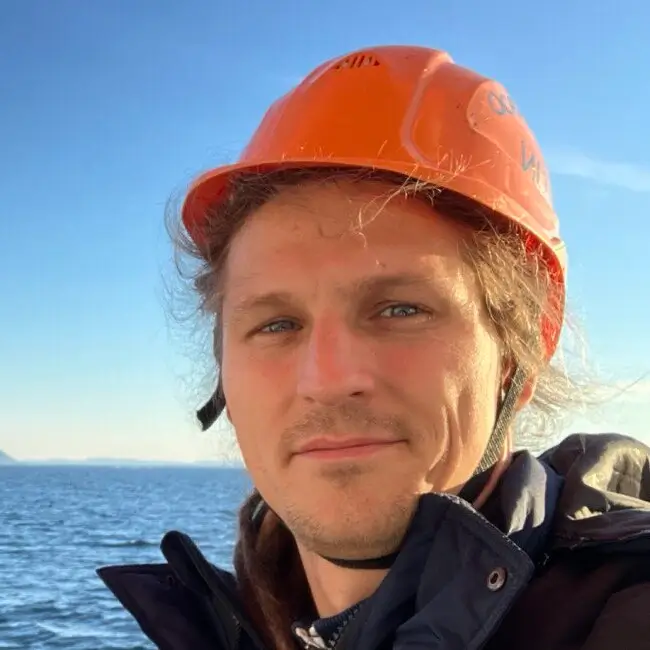
Caricature: debate on whether Frederick Cook actually reached the North Pole.
When is the best time to be at the pole? Summer or winter? Let’s say you want to walk to the pole, the North or the South. When is the best time to do it?
The answer seems obvious. Of course, in the summer. At the South Pole, this is true. In winter, it is very cold there, on average –60°C. In summer, it is much better, from –30 to –40. And at the North Pole, it is the opposite. In winter, the temperature is also low, but not as cold as at the South Pole, only –30–40°C. In summer, the temperature at the North Pole fluctuates around zero.
This difference between the North and South Poles is easily explained. The South Pole is located in the middle of the continent, also covered by a glacier several kilometres thick. Low temperatures due to high latitudes become even lower due to the altitude of almost 3 kilometres above sea level. The North Pole, on the contrary, is located in the middle of the ocean. The ice thickness at the North Pole is only a few metres (not several kilometres). The sea temperature under the ice is also not very low, only –2°C, because at lower temperatures sea water freezes. Therefore, it is much warmer at the North Pole than at the South Pole.
So, in the summer at the North Pole there is sometimes a little plus, sometimes a little minus in temperatures. What does this lead to? To the fact that everything is actively melting. Puddles, slushes of water and snow, and even small lakes are formed on the ice. In the summer, about half of the ice surface in the Arctic Ocean is covered with such small and large puddles. At the North Pole in the summer there is water all around! Clothes and equipment are constantly wet from this dampness, and this is very uncomfortable.
Papanin, who drifted as part of the polar station North Pole-1 from May 1937 to February 1938, complained a lot about the dampness in the summer and autumn in his memoirs. Polar explorers were really looking forward to the polar winter, not because they were polar explorers, but because it was much more comfortable to live at the North Pole in winter.
But let’s get back to the question of the right time to conquer the poles. In the case of the South Pole, everything is clear. You leave at the beginning of spring and try to return before the polar night. If you don’t make it, you’ll freeze to death.
This is exactly what happened to Robert Scott’s expedition at the beginning of the 20th century. Two competing expeditions, the Norwegian Amundsen and the British Scott, simultaneously stormed the South Pole at the end of 1911 and the beginning of 1912. The expeditions set out almost simultaneously at the beginning of spring, at the end of October, which corresponds to the end of April in the Northern Hemisphere. Amundsen moved faster, safely reached the South Pole and returned to the base camp on the coast at the end of January. Scott moved much more slowly at the beginning of the journey and began to lag behind Amundsen by about a month. It was a deadly lag. It was generally possible to move back with much less force than at the beginning of the journey, but with the end of the polar day the weather began to deteriorate greatly. Scott’s detachment did not have time to return to the base camp in February, and at the end of March (which corresponds to September in the Northern Hemisphere) they completely perished, being only 17 kilometres from the food depot and 264 kilometres from the base camp.
Several years earlier, in 1908-1909, two American-Greenlandic (or American-Eskimo?) expeditions of Frederick Cook and Robert Peary set out to reach the North Pole.

Frederick Cook in his Arctic gear, 1909.

Self-portrait of Robert Peary, Cape Sheridan, 1909.
When did they set out? In the summer? Not at all. It is too wet in the Arctic in the summer and difficult to move across the ice. Both expeditions set out in February: Cook’s in 1908, and Peary’s a year later, in 1909.
In February, the polar night is coming to an end, but it is still cold and the ice does not melt. Peary’s expedition, like Amundsen’s, moved quickly and, according to him, reached the pole (which is very doubtful) at the beginning of April. By the end of April, they had already returned to land.

Peary’s expedition allegedly standing at the North Pole.
Cook’s detachment reached the pole approximately in the same season, in mid-April. However, this happened a year earlier than in Peary’s case, since Cook set out a year earlier. However, the fact that Cook actually reached the pole is also seriously doubted. Cook’s detachment, like Scott’s, returned more and more slowly. By the end of May, they had run out of food.
They would have died of hunger and cold here, but, unlike in Antarctica, summer began, not ended, and the return journey could be commenced. It became noticeably warmer, animals and birds appeared that could be shot and eaten. Of course, walking became much more difficult, but they still managed to move south somehow.

A photo of Cook’s expedition allegedly standing near the North Pole.
At the end of September, Cook’s detachment stopped for the winter on one of the islands of the Canadian Arctic Archipelago. There were 500 kilometres left to the base camp. Having stocked up on walrus and musk ox meat, the detachment spent a difficult winter. In February, they set off again and barely reached the Eskimo camp on the northwestern coast of Greenland by April 1909. By the way, Cook returned to civilisation just a few days earlier than Peary.
That’s how summer puddles and snowdrifts in the Arctic gave Frederick Cook and the Eskimos Ahwelah and Etukishook who accompanied him another chance to return home the following year, rather than perish in the snow and ice.
For a long time, Cook and Peary fought with each other for the right to reach the pole first. Peary officially won, but now the prevailing opinion is that neither of them ever actually reached it—the first people at the North Pole were Soviet polar explorers who flew there by plane in 1948. Only the Bolsheviks conquered the North Pole!

Leading Researcher, Head of Arctic Oceanography Laboratory
Shirshov Institute of Oceanology, Moscow Institute of Physics and Technology, Ocean Around Us

